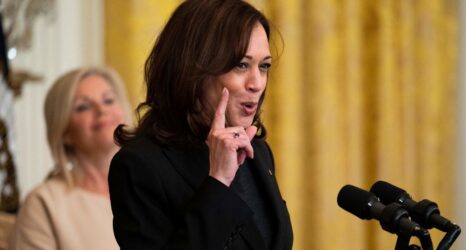If you think that there’s a gender disparity between women and men characters on TV, you’re right—and Martha Lauzen, Ph.D., can prove it. In her 17th annual Boxed In report, Lauzen, executive director of the Center for the Study of Women in Television and Film at San Diego State University, shows that on broadcast networks, cable and Netflix combined in 2013-14:
—Male characters worked; female characters helped others. Only 41 percent of female characters played work-related roles, compared to 66 percent of male characters. And male characters were much more likely than women to be seen working, 58 percent to 43 percent. Female characters were nearly twice as likely to play personal-life-related roles (mother, girlfriend, wife) than male characters (43 percent vs. 24 percent). And the goals of female characters trended more toward helping others (15 percent vs. 9 percent for male characters), while male characters’ goals were more often work-related (52 percent compared to 35 percent).
—Male major and speaking characters outnumbered women: Women were just 40 percent of major characters and 40 percent of speaking characters
—White women far outnumbered women of color as TV characters. While 77 percent of female characters were white, just 13 percent were African American, 4 percent Latina, 4 percent Asian and 2 percent of another race or ethnicity.
—Women weren’t allowed to age on TV as readily as men. The majority of female characters in Lauzen’s study (59 percent) were in their 20s and 30s, while the majority of men (59 percent) were in their 30s and 40s. Just 18 percent of female characters had reached their 40s.
Lauzen also breaks down the numbers for women behind the scenes, finding that progress has stalled in recent years. Again, looking at broadcast networks, cable and Netflix combined, women comprise just a quarter of key behind-the scenes roles. They’re mostly likely to be producers, least likely to be directors of photography.
Percentages of Women and Men Working Behind the Scenes on Broadcast, Cable and Netflix programs in 2013-14
Creators: Women, 19, Men 81
Executive producers: Women 21, Men 79
Producers: Women 40, Men 60
Writers: Women 26, Men 74
Directors: Women 13, Men 87
Editors: Women 16, Men 84
Directors of photography: Women, 1; Men 99
Finally, it makes a significant difference for women characters if the creator or writer is a woman. When a show had at least one woman writer, 46 percent of the characters were female; with no women writers, that number slipped to 39 percent. And when a show had at least one woman creator, 47 percent of all characters were female. When only the boys ran the show, females accounted for 39 percent.
Photo from Wikimedia Commons
Michele Kort is senior editor of Ms.





